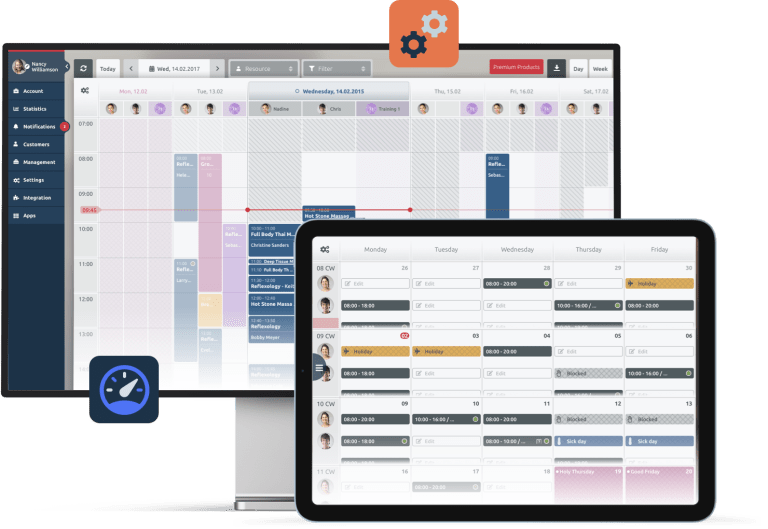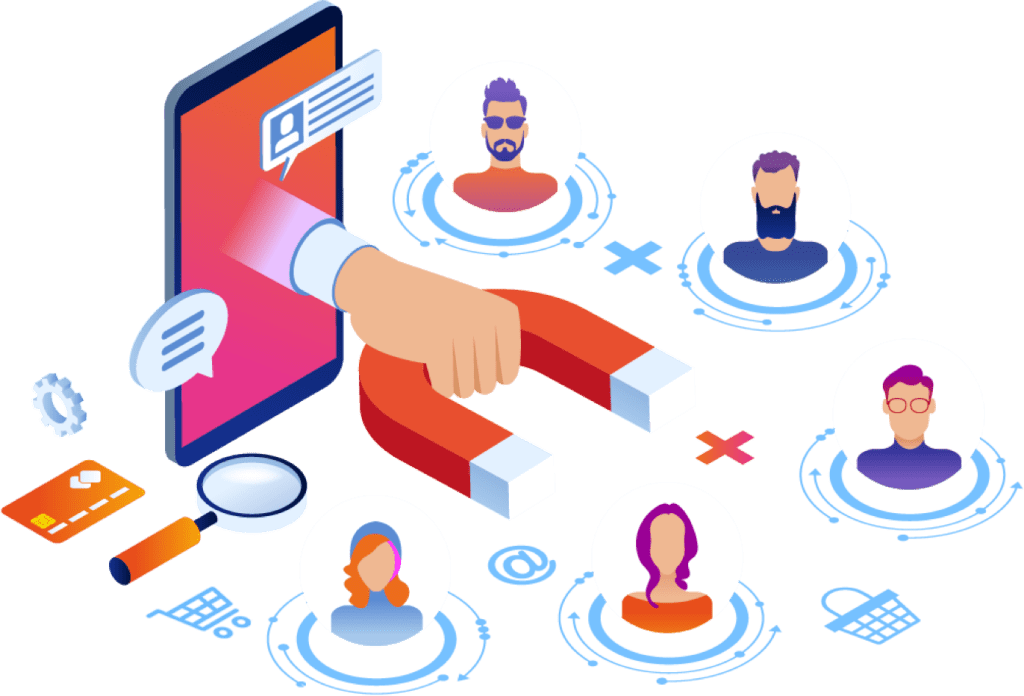

Lucy Cromwell
Lucy Cromwell, a contributor to TIMIFY has many years of experience working in property management and has recently turned her focus towards establishing herself as an authority in the industry.
When asked what your business’s biggest asset is, you might be inclined to say your product, your top-notch customer care processes, or a particular USP that’s found nowhere else on the market. Though these things are certainly important for your success, before any of them became tangible assets, they started off as ideas.
The top minds at your company are the foundation of your success, and every day they work for you, they exercise talent and insights that bring you closer to your long-term goals.
Your workers’ time is one of your most valuable expendable resources, but if you’re like most business owners, a lot of it is being wasted on busy work, sometimes where you least expect it.
In this post, we’ll look at how you can automate some of the more routine, repetitive tasks at your business, and help your employees focus on what’s important.
_________________
Deciding Where You Should Automate
Before you embark on a project to automate processes at your business, it’s important to understand where your need for automation stems from, and what exactly you’re hoping to achieve with it. Here are a few preliminary tips you can use to better inform your approach to automation.
_________________
Zero-in On Complicated or Time-Consuming Tasks and Workflows
Complex tasks that require a high degree of care and attention to get right, or routine, repetitive tasks that take up a lot of time, are usually ideal targets for automation. These kinds of jobs can often be automated away completely, or sped up by applying the right tools to the process. They also tend to be easy to identify simply by asking your employees. These tasks tend to be the most tedious and irritating, so your workers won’t hesitate to point them out!
_________________
Identify Lapses in Communication Between Pieces of Software

A large part of the modern automation niche is focused on bridging gaps in communication between disparate apps and processes. If anyone at your business currently has to act as a ‘middle man’ between one software suite and another, there’s a high chance that this part of their role can be automated, freeing up their time to focus on more exciting, forward-thinking projects.
Appointment booking is one area where TIMIFY can help improve efficiencies in your business and offer a convenient way for customers to instantly book services, appointments and events online. TIMIFY helps customers with the following tasks at a click of a button:
- Self-schedule appointments
- One-to-one sessions, group bookings and video conferencing
- Customised booking links for services and resources
- Make any type of group event (classes, training, conferences) online, with simple sign-ups and notifications
- Access to bookings directly from Google Search and Google Maps by integrated booking widgets into your company’s GMB Profile
At TIMIFY, we’ve seen clients have up to a 60% increase in revenue. Get started with a free trial today
_________________
Review the Way that Different Teams or Individuals Communicate
In many companies, there are routine operations that are handled by different workers or teams communicating in order to use information from a single source. If this sounds familiar, relatively simple instances of automation can streamline the way your company transfers information internally.
_________________
Find Ways to Innovate
Automation is still a relatively new talking point in many industries, and outside the biggest names in B2B tech, many entrepreneurs don’t understand the full capabilities of AI and machine learning. There may be automation tools on the market that could help drive your business towards some of its loftiest long-term goals, in ways that you’d never considered before.
Having some brainstorming sessions with different departments about where you’d most like to see more streamlined processes can be a great starting point for you to research new, automation-based solutions for old problems. You might be surprised at the kind of tools that you discover.
_________________
6 Roles That Businesses Should Consider Automating

Now that you know the best ways to approach the topic of automation, here’s some of the key roles and responsibilities that you may want to consider automating. Though automating all of these can be quite costly, and you may have good reason to keep some of these processes under human control, thinking about what could be changed in these areas can be a great starting point when working towards better all-around efficiency.
1. Organizing and Responding to Emails
Managing email is a ubiquitous routine task everyone recognizes as a drain on time. One 2019 study by Adobe found that the average consumer spends “approximately five hours a day checking work email (three-plus hours a day) and personal email (two-plus hours a day)”.
Though some people at your business will already be masters of their inboxes, using simple automation rules to sort emails into folders based on the accounts they’re associated with and the order of priority, you’d be surprised at the proportion of workers who aren’t streamlining their emails using simple features that are well within their reach.
Aside from the filtering rules that come with all good email clients, tools like Sanebox can empower workers to avoid irrelevant and unimportant emails, set up automatic responses to messages that meet specific criteria, and more.
2. Creating Proposals
Any sales veteran will tell you that drafting proposals from scratch can be a long and draining process. This is especially true in sectors like B2B software, where getting a proposal signed off and over the line can require the input of several people.
With all that back-and-forth between individuals and departments, and several proposals in the queue at any one time, the overall quality of those proposals can easily start to decline. Fortunately, there’s a great selection of proposal management software on the market that can optimize your proposal-creation process and save a huge amount of time.
Tools such as Pandadoc will allow you to bring all your proposals together in a single well-organized view, and give you a great platform for communication with legal, marketing, and any other relevant departments. Proposal management suites are also able to set up proposal templates based on data collated from previously signed-off documents, allowing you to get proposals completed faster and cut out unnecessary admin.
3. Lead Automation
Prospecting and nurturing leads are widely viewed as a process of trial and error, with a lot of precious time wasted on showcasing your product to contacts who will ultimately never purchase it.
Ryan Welmans, CEO at leading sales engagement platform Sopro explains that, “Several programs now allow you to automatically call and speak to cold leads, arrange follow-up appointments, add those appointments to the calendars of your salespeople, and document everything in your CRM. And beyond this, automation can also be linked to lead scoring to target and organise the contacts that should be at the top of your radar.” Though there’s no totally automatic solution to lead qualification yet, the use of email finder tools for lead automation can speed up essential elements of it.
4. Organizing Documents and Chasing Signatures
Whether you’re running a fledgling startup or a multinational corporation, there’ll be instances where you’ll need to organize documentation and get things signed, both customer-side and internally. Keeping track of all this documentation and chasing people up is tedious and can be a huge drain on your time and resources. Furthermore, if certain items need to be signed by a certain date, those looming deadlines can be an unnecessary source of stress which will stop you and your employees from performing at their best.
Document management tools such as Docusign and Signable can cut out a lot of the pencil-pushing that comes with managing your documentation, by digitizing and organizing documents, keeping important paperwork organized in one place, and best of all, sending out automatic reminders for required signatures so you don’t have to worry about chasing.
5. Maintaining Good Customer Service and Engagement

Keeping your customers happy has always been an integral part of running a successful business, in particular guest experience in the hospitality industry, and with the digital-first mindset of modern consumers, customer service standards are higher than ever.
Aside from improving your brand equity, maintaining high customer service standards will also foster loyalty in existing customers, and stimulate word-of-mouth marketing.
Chatbots are a great way of making sure that all routine customer enquiries are addressed promptly, even outside working hours. Though it’s a fairly saturated market, and some chatbots have a lot of kinks to iron out, best-in-class tools like Netomi exhibit some truly impressive features, such as sophisticated natural language understanding, sentiment analysis, and CRM integrations that will allow chatbots to provide highly personalized resolutions to support tickets.
6. Organic Social Media Marketing
While paid social ads are generally automated the same as any other PPC platform, organic social media marketing can quickly become a drain on time.
Marketers are often drawn into a never-ending feed of competitor and industry content, reacting, sharing, and commenting well past the point where it would be useful for your company’s brand presence. This can be extremely costly for startups, where the head of SEO, social media, and PPC are often the same person.
Though you’ll always need to have some kind of hands-on role when it comes to your organic social media, there are many tools on the market you can use for social media automation, which will free up masses of precious time. Tools such as Hootsuite, for example, will allow you to set up a pipeline of organic posts ahead of time, taking out the manual work and removing distractions. There are also many great resources for automoderation, which will delete any spam and competitor links that might appear on your profiles, saving you time and helping your brand maintain a trustworthy, professional image.
_________________
Final Thoughts…
When it’s properly applied, automation can save your business a huge amount of time and resources that can be invested into pursuing more exciting, innovative, and long-term goals. We hope this primer on business automation has helped stimulate the conversation around automation at your company, and helped you move towards a more efficient future!

About the author
Lucy Cromwell
Lucy Cromwell, a contributor to TIMIFY has many years of experience working in property management and has recently turned her focus towards establishing herself as an authority in the industry. Connect with Lucy on LinkedIn: @LucyCromwell7
Related articles


